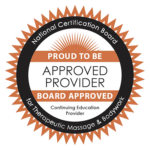Essential Hygiene: The Importance of Cleaning and Disinfecting Massage Tools
Introduction to Gua Sha
As a bodywork professional, ensuring the cleanliness and disinfection of your massage tools is not just a best practice—it's a critical responsibility. Just as you would expect your healthcare provider to use sterilized instruments, your clients rely on you to maintain high standards of hygiene to prevent the spread of infections, including bloodborne pathogens. This blog post will guide you through the essential steps of cleaning and disinfecting massage tools, including cupping sets and Gua Sha instruments, and highlight the importance of using approved disinfectants like hydrogen peroxide.
Why Cleanliness Matters
Imagine visiting a doctor who merely rinses off surgical instruments with soap and water between patients. It’s an unsettling thought because we understand the importance of proper sterilization in medical settings. Similarly, in the world of massage therapy and bodywork, taking shortcuts in cleaning and disinfection can lead to the spread of infections. Pathogens can be transmitted through tools that come into contact with the skin, body fluids, or blood, making thorough cleaning practices imperative.
Steps for Disinfecting Massage Tools
- Pre-cleaning: Rinse the cups with warm water to remove any residue.
- Washing: Wash the tools with soap and water.
High Level Disinfection:
- Immerse the tools in a High Level Disinfectant, such as hydrogen peroxide solution for the appropriate amount of time in the directions.
- Rinsing: Rinse the cups with water to remove any disinfectant residue.
- Drying: Allow the tools to air dry completely on a clean, sterile surface.
- Storage: Store your tools in a clean container
High Level Disinfectants
When it comes to disinfecting massage tools, certain products are known for their efficacy in eliminating pathogens. Here are some commonly approved disinfectants:
- Hydrogen Peroxide ( 6 to 7.5% solution): Effective against a broad range of microorganisms, including bacteria, viruses, and fungi.
- Glutaraldehyde: Commonly used for disinfection due to its ability to rapidly kill bacteria and viruses.
- SNAP Disinfectant: EPA-registered disinfectant. Concentrate, One bottle replaces up to 32 bottles of the leading anti-bacterial all-purpose cleaner.
** Each of these productshas a specific contact time, or the time in which it must be in contact with your instruments in order to reach high-level disinfection. Please read the label for specific instructions.
Why Listerine is Not Adequate for Sterilizing Massage Tools
1. Insufficient Disinfectant Properties
Listerine is primarily formulated to kill bacteria and freshen breath in the mouth. While it contains ingredients like alcohol and essential oils that have antiseptic properties, these are not strong enough to ensure the complete sterilization of massage tools. Sterilization requires the elimination of all forms of microbial life, including bacteria, viruses, fungi, and spores, which Listerine cannot guarantee.
2. Lack of Efficacy Against Bloodborne Pathogens
Massage tools can come into contact with bodily fluids, potentially exposing them to bloodborne pathogens such as hepatitis B, hepatitis C, and HIV. Listerine has not been tested or approved for use against these pathogens. It is crucial to use disinfectants that are specifically designed and tested to eliminate bloodborne pathogens to ensure the safety of both the practitioner and the client.
3. No EPA Registration
Effective disinfectants are typically registered with the Environmental Protection Agency (EPA) and included on lists such as List N, which identifies disinfectants effective against SARS-CoV-2 (the virus that causes COVID-19). Listerine is not an EPA-registered disinfectant, meaning it does not meet the rigorous standards required for products used to disinfect surfaces and instruments in clinical or professional settings.
4. Inappropriate Formulation
The ingredients in Listerine, such as menthol, thymol, and eucalyptol, are designed for use in the oral cavity and may not be safe or effective for use on non-porous surfaces or tools. These ingredients can leave residues or cause damage to certain materials, potentially affecting the integrity and functionality of massage tools.
5. Lack of Scientific Evidence
There is no scientific evidence or clinical studies supporting the use of Listerine as a disinfectant for massage tools. The absence of such evidence underscores the importance of using products that have been scientifically validated for their disinfectant properties.
For effective sterilization of massage tools, it is essential to use products that are specifically designed and tested for this purpose. Approved disinfectants, such as hydrogen peroxide (6-7.5%%), and EPA-registered products are reliable options. These products have been proven to kill a broad spectrum of microorganisms and ensure the safety and cleanliness of your tools.
Using Listerine for sterilization may seem convenient, but it does not provide the necessary assurance of disinfection and could compromise the health and safety of your clients. Always adhere to established guidelines and use appropriate disinfectants to maintain high standards of hygiene in your practice.
Resources for More Information
For further reading on sterilization and infection control for spa professionals, consider these resources:
- Centers for Disease Control and Prevention (CDC) - Guidelines for Disinfection and Sterilization
- OSHA Bloodborne Pathogens and Needlestick Prevention
- Environmental Protection Agency (EPA) - List N: Disinfectants for Use Against SARS-CoV-2
- Massage Therapy Foundation - Infection Control and Prevention
By following these steps and utilizing approved disinfectants, you can ensure the highest standards of hygiene in your practice, providing a safe and clean environment for your clients. Remember, meticulous disinfection is not just about compliance—it's about the trust and safety of those you serve.




